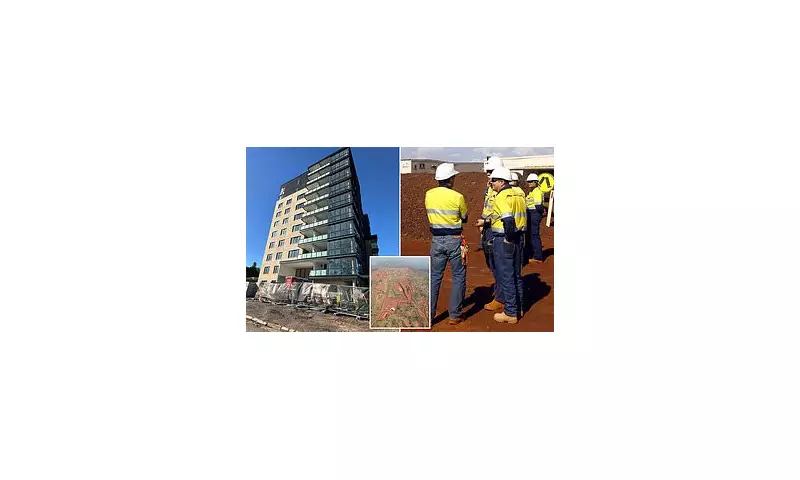
The Australian mining sector is bracing for what analysts are calling the biggest threat to its iron ore supremacy in decades, as Guinea's colossal Simandou project prepares to unleash a flood of high-grade ore onto global markets.
The £75 Billion Game Changer
Hidden within Guinea's remote mountain ranges lies Simandou - the world's largest untapped iron ore deposit containing an astonishing 2.4 billion tonnes of premium-grade ore. After years of delays and political wrangling, this mining behemoth is finally poised to begin production by 2028, potentially reshaping global steel markets forever.
Australian Giants Under Threat
Mining titans Rio Tinto and BHP, which have dominated the global iron ore trade for generations, now face their most significant challenge yet. According to alarming new analysis, Simandou's entry could slash iron ore prices by up to 25%, wiping an estimated £75 billion from the market value of Australian producers.
"This isn't just another mine opening - it's a fundamental restructuring of global iron ore supply," warned one industry insider. "Simandou's quality and scale represent an existential threat to Australia's position as the world's iron ore powerhouse."
Why Simandou Changes Everything
- Unmatched Quality: Simandou's ore contains approximately 65% iron content, significantly higher than Australia's average 62%, making it more efficient for steel production
- Massive Scale: Initial production targets suggest output could reach 100 million tonnes annually, with potential to expand to 200 million tonnes
- Strategic Location: While landlocked, new infrastructure including railways and ports are being developed to connect Simandou to global markets
- Chinese Backing: Strong support from Chinese steel mills and investors ensures ready markets for Simandou's output
The Infrastructure Challenge
Developing Simandou represents one of the most complex mining infrastructure projects ever undertaken. The remote location requires building:
- A 650-kilometre railway through challenging terrain
- New deep-water port facilities on Guinea's coast
- Power plants and supporting infrastructure in previously undeveloped regions
Despite these challenges, the consortium behind the project - including Rio Tinto, Chinese aluminium giant Chinalco, and the Guinean government - appears committed to overcoming the obstacles.
Market Implications
The timing couldn't be more delicate for Australian producers. After enjoying years of strong prices driven by Chinese demand, the arrival of Simandou's high-quality ore could:
- Force higher-cost Australian mines to reconsider expansion plans
- Accelerate the closure of older, less efficient operations
- Compress profit margins across the industry
- Trigger consolidation among smaller producers
"Australian miners have grown accustomed to their dominant position," noted a commodities analyst. "Simandou represents the first genuine competitor that can match both quality and scale. The industry will never be the same."
The Road Ahead
While 2028 remains the target for first production, the project faces significant hurdles. Political stability in Guinea, environmental concerns, and the sheer complexity of the infrastructure build could still delay Simandou's arrival.
Nevertheless, Australian mining executives are taking the threat seriously, with many already developing contingency plans for a post-Simandou world where iron ore prices may never return to current levels.
The coming years will determine whether Australia's iron ore industry can adapt to this new competitive landscape or faces the gradual erosion of its hard-won market dominance.





